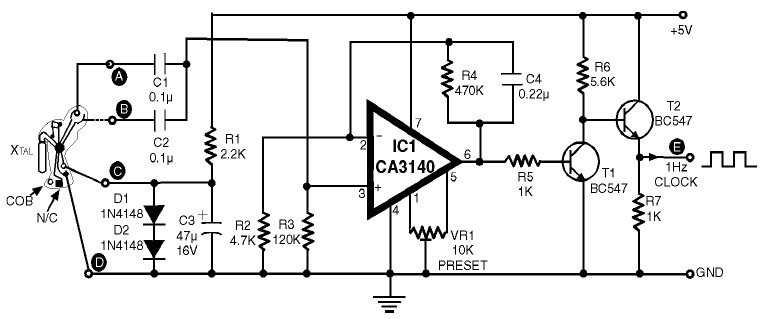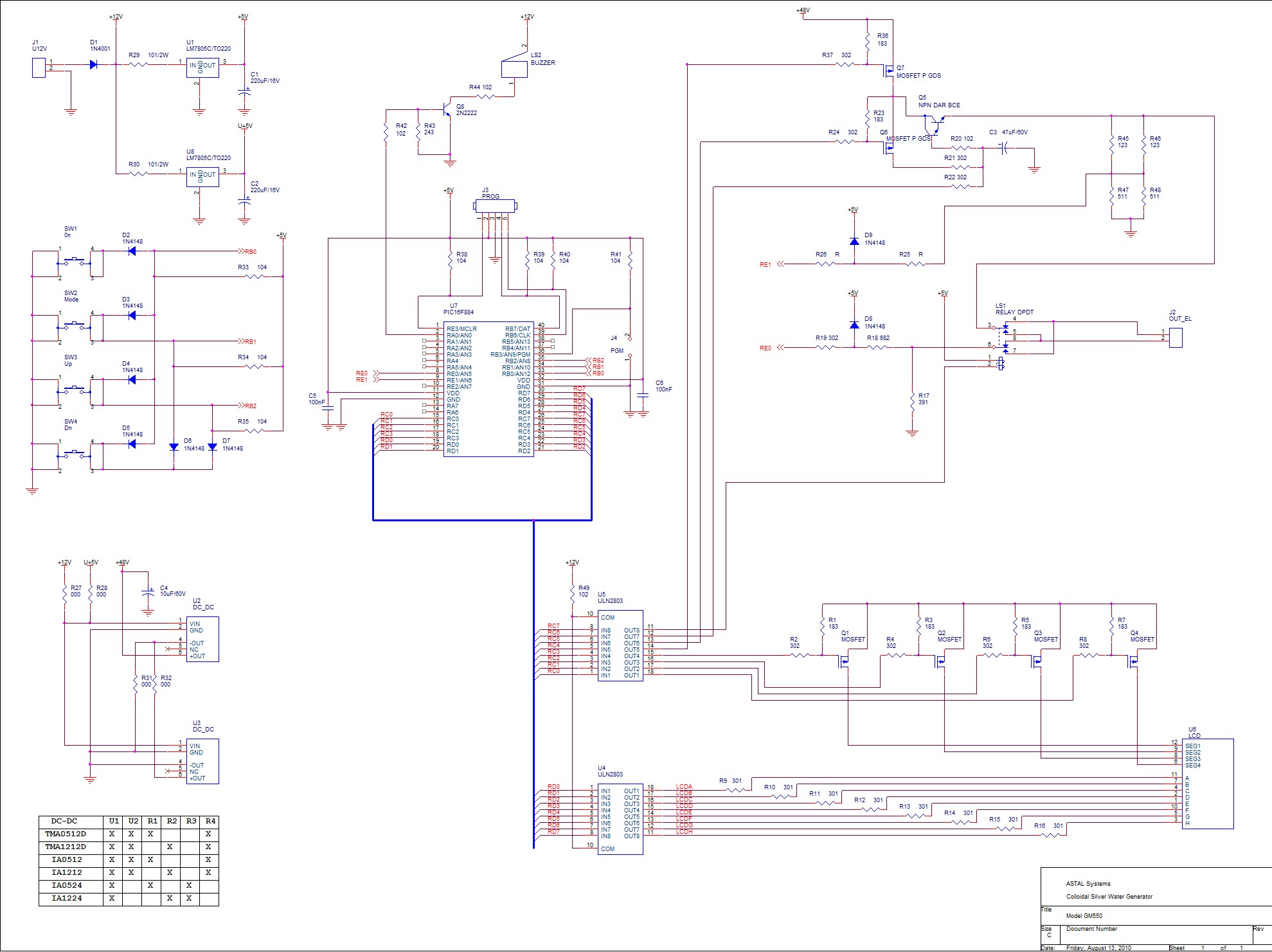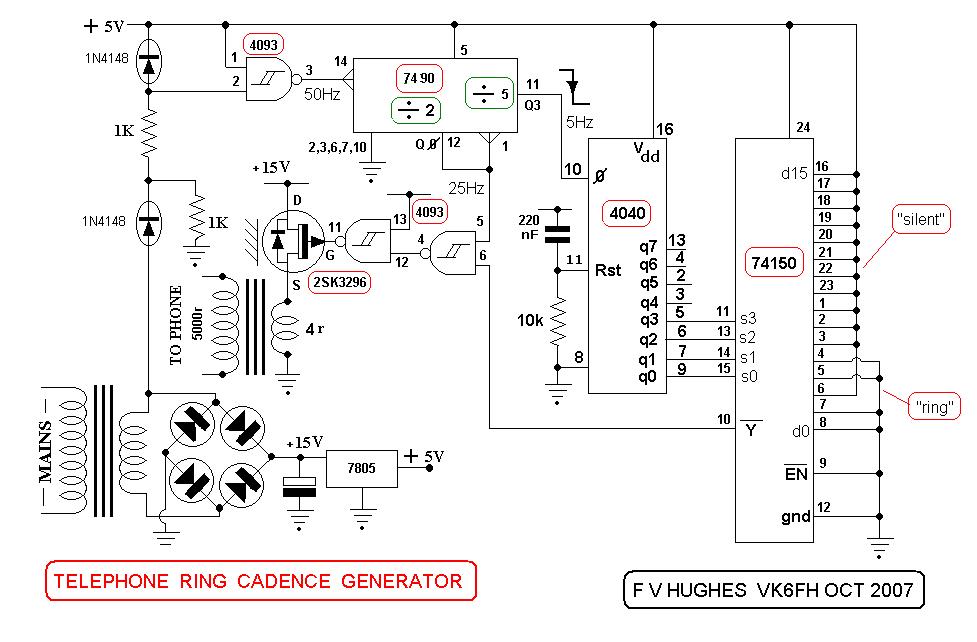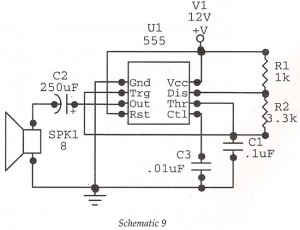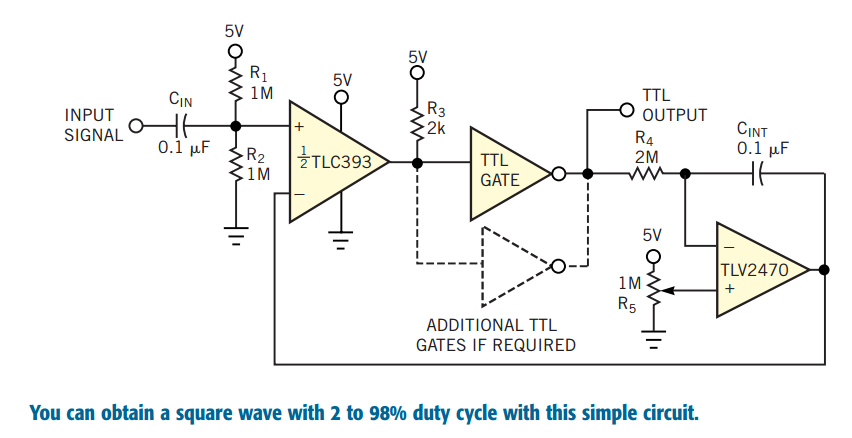
Panner Waveform Generator
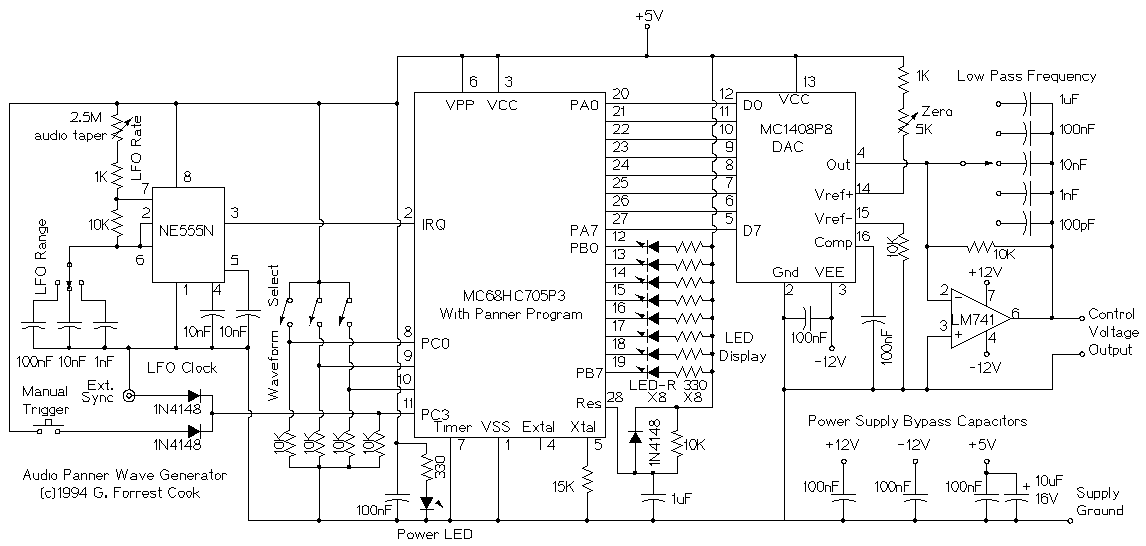
This device is a microprocessor controlled waveform generator that can be used for driving a voltage controlled stereo panner for music applications. Panning is simply the movement of a mono audio signal between the left and right channels of a stereo sound system. The circuit can also be used to drive other voltage controlled modules that are used in analog music synthesis. The output of the waveform generator is a 0-10V DC control voltage. One of eight waveforms can be selected using an 8 position BCD switch. Waves include: ramp, triangle, sine, cos(x)*sin(5x), damped 4 cycle sine wave, and pseudo random. Other waveforms may be substituted by changing the assembly language waveform tables. The waveform generator runs in an asynchronous manner, it can be synchronized with other devices by use of an external (5V logic) sync signal or a manual sync trigger.
The microprocessor controlled waveform generator is designed to produce a variety of waveforms for audio applications, particularly in the realm of music synthesis. At its core, the device utilizes a microcontroller that processes input from an 8-position BCD switch, allowing users to select from a range of eight distinct waveforms. These waveforms are generated as a 0-10V DC control voltage output, which can be directly utilized in voltage-controlled devices, such as stereo panners and other analog synthesis modules.
The selected waveforms include a ramp wave, triangle wave, sine wave, a complex waveform represented by cos(x)*sin(5x), a damped four-cycle sine wave, and a pseudo-random waveform, providing a broad spectrum of sound manipulation options. The ability to substitute additional waveforms by modifying the assembly language waveform tables enhances the versatility of the generator, allowing for custom sound design tailored to specific applications.
Synchronization capabilities are a critical feature of this waveform generator. It can operate asynchronously, but it also supports synchronization with other devices through an external sync signal that operates at 5V logic levels. This feature is particularly useful in complex setups where multiple devices need to maintain precise timing relationships. Additionally, a manual sync trigger is available, allowing for immediate synchronization when required.
Overall, this waveform generator is an invaluable tool for audio engineers and musicians alike, enabling the creation of dynamic soundscapes and intricate audio effects through its diverse waveform outputs and synchronization capabilities.This device is a microprocessor controlled waveform generator that can be used for driving a voltage controlled stereo panner for music applications. Panning is simply the movement of a mono audio signal between the left and right channels of a stereo sound system .
The circuit can also be used to drive other voltage controlled modules that are used in analog music synthesis. The output of the waveform generator is a 0-10V DC control voltage. One of eight waveforms can be selected using an 8 position BCD switch. Waves include: ramp, triangle, sine, cos(x)*sin(5x), damped 4 cycle sine wave, and pseudo random. Other waveforms may be substituted by changing the assembly language waveform tables. The waveform generator runs in an asyncronous manner, int can be syncronized with other devices by use of an external (5V logic) sync signal or a manual sync trigger 🔗 External reference
The microprocessor controlled waveform generator is designed to produce a variety of waveforms for audio applications, particularly in the realm of music synthesis. At its core, the device utilizes a microcontroller that processes input from an 8-position BCD switch, allowing users to select from a range of eight distinct waveforms. These waveforms are generated as a 0-10V DC control voltage output, which can be directly utilized in voltage-controlled devices, such as stereo panners and other analog synthesis modules.
The selected waveforms include a ramp wave, triangle wave, sine wave, a complex waveform represented by cos(x)*sin(5x), a damped four-cycle sine wave, and a pseudo-random waveform, providing a broad spectrum of sound manipulation options. The ability to substitute additional waveforms by modifying the assembly language waveform tables enhances the versatility of the generator, allowing for custom sound design tailored to specific applications.
Synchronization capabilities are a critical feature of this waveform generator. It can operate asynchronously, but it also supports synchronization with other devices through an external sync signal that operates at 5V logic levels. This feature is particularly useful in complex setups where multiple devices need to maintain precise timing relationships. Additionally, a manual sync trigger is available, allowing for immediate synchronization when required.
Overall, this waveform generator is an invaluable tool for audio engineers and musicians alike, enabling the creation of dynamic soundscapes and intricate audio effects through its diverse waveform outputs and synchronization capabilities.This device is a microprocessor controlled waveform generator that can be used for driving a voltage controlled stereo panner for music applications. Panning is simply the movement of a mono audio signal between the left and right channels of a stereo sound system .
The circuit can also be used to drive other voltage controlled modules that are used in analog music synthesis. The output of the waveform generator is a 0-10V DC control voltage. One of eight waveforms can be selected using an 8 position BCD switch. Waves include: ramp, triangle, sine, cos(x)*sin(5x), damped 4 cycle sine wave, and pseudo random. Other waveforms may be substituted by changing the assembly language waveform tables. The waveform generator runs in an asyncronous manner, int can be syncronized with other devices by use of an external (5V logic) sync signal or a manual sync trigger 🔗 External reference
